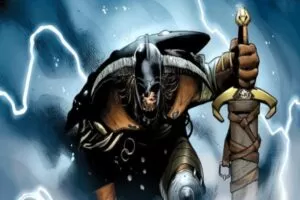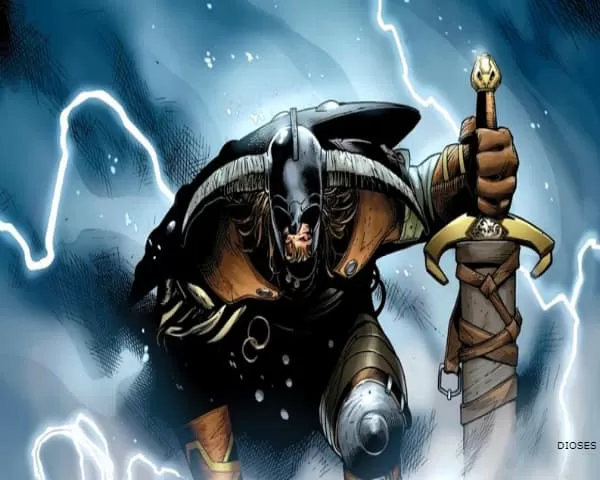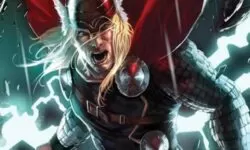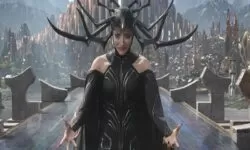In Norse mythology, the original inhabitants of Valhalla were the Æsir (gods) and Ásynjur (goddesses), but they were not the first divinities that the Norse races worshipped because they also recognized the power of the gods of the sea, wind, forests and the forces of nature, known as the Vanir.
An important event in Norse mythology is the Æsir-Vanir War that eventually resulted in the unification of the gods.
Click on any of the Images and Discover the History of Norse Gods and Goddesses
List of Old Norse God Names
God Odin
As the ruler of Asgard, the realm of Æsir, Odin is considered the Father of all gods. His father was the Borr and his mother was the Jötunn Bestla. He is famous for riding into battle on his trusty eight-legged steed Sleipnir and wielding his dwarf-forged spear Gungnir which is said to never miss a target.
Odin, God of wisdom, poetry and war, has at least five sons, from four different partners. His best-known son is Thor, who was conceived with Jörð, the personification of Earth. His wife, Frigg, bore him Baldr and Höðr, and with Jötnar Gríðr and Rindr he fathered Viðar and Váli.
God Thor
Probably the best known of the Norse gods, largely thanks to Marvel for making him a superhero, Thor, the god of thunder, is the son of Odin and Jörð and the husband of the goddess Sif. He is physically the strongest of the Æsir and has fierce eyes, red hair and a full beard.
Quick to anger, Thor is said to protect Asgard and Midgard, the realm of humans, from Jötnar and other threats. He travels primarily in a chariot drawn by the two goats Tanngrisnir and Tanngnjóstr and pushes the dwarf-forged hammer Mjölnir.
God Frigg
The goddess of marriage, family and motherhood, Frigg is the wife of Odin and the mother of two of his sons, Baldr and Höðr. Ruling Asgard as Queen alongside her husband, she is the only one who can sit on the throne, Hliðskjálf, and look out over the nine realms.
Other Norse Mythological Names
God Týr
The original god of war, Týr is considered the bravest of all the gods. With a keen interest in justice and fair treaties, he is often considered the god of war and peace and the one who decides who will win battles. His parentage is unclear.
Týr has only one hand because the other hand was bitten by the wolf Fenrir. Showing his bravery, Týr put his hand in the mouth of the beast to distract it while the other gods tied it to a rock. When Fenrir realized he had been tricked, he bit Týr’s hand to clean it.
God Heimdallr
He is the guardian of the Bifröst Bridge, the rainbow that connects the land of mortals, Midgard, with the land of the Gods, Asgard.
Heimdallr has a horn known as the Gjallarhorn, which he blows to warn of impending trouble. His senses are so good that he can hear wool growing on sheep and grass growing from the ground. He can see all the way to the ends of the Earth, making him the best protector of the gods.
God Loki
In Norse mythology he is the son of Laufey and Jötunn Fárbauti and is the blood brother of Odin. He is known as the god of deceit and mischief and the father of monsters.
Loki is not usually considered one of the Æsir, due to his deceptions. He caused, among other things, Baldr’s death, and the Æsir can never be sure whether he is helping or hindering them.
God Baldr and Höðr
The God of Light and Radiance, Baldr, and the God of Darkness, Höðr, are twin brothers, sons of Odin and Frigg.
Baldr is the most beloved of the gods who once had a nightmare that he would be killed. Their mother Frigg demanded that all things in the whole of the nine realms promise not to harm him.
Unfortunately, the mistletoe did not swear and when Loki discovered this, being an evil trickster, he convinced Höðr to throw a mistletoe spear that pierced Baldr’s heart and thus Baldr ended up in the realm of the dead.
However, all is not bad because at Ragnarok, the Day of Judgment, the realm of the dead will be opened and, when Odin dies, Baldr and Höðr will rule in his place.
God Vidar
Vidar, the son of Odin and Jötunn Grid, is the second strongest of all the Æsir after Thor and lives in a great hall in Asgard called Vidi. Despite his strength, Vidar is a peaceful god and known to enjoy sitting quietly or working on creating a special shoe.
While it may sound a bit boring, this special shoe, formed from the remains of all the cobblers in Midgard, will play a key role in avenging his father’s death after Ragnarok. Vidar will kill the fearsome wolf Fenrir and live on after Ragnarok to create the new world that comes after.
God Vali
Vali is the youngest son of Odin and the grid of Jötunn. Vali is generally regarded as an archer and represents the sun’s rays, like arrows, that grow stronger as winter draws to a close.
Vali was conceived specifically to avenge Baldr’s death, which he did by killing Hodr. Vali is another survivor of Ragnarok.
God Bragi
Bragi is the wise and learned bard of Valhalla. He may have been one of Odin’s sons (it is unclear from the source material), but many consider him to be a god of poetry and music. His name, in fact, comes from the word Bragr meaning poetry.
Bragi has a very long beard and has runes carved on his tongue. It is often said that he was married to the goddess of youth Idunn.
Over the years there were many Viking poets named Bragi, the most famous being Bragi Boddason. This may be attributed to the god Bragi or it is possible that the god Bragi is an immortalization of one of the poets.
God Iðunn
With a name meaning “he who rejuvenates”, the goddess of youth, Iðunn, is the dispenser of the fruit that gives the gods their longevity. Iðunn is said to have been married to the poet and jester Bragi.
The fruit she dispenses is usually depicted as golden apples, although it is unlikely that they did not exist in Scandinavia at that time! The word epli, which now means apples, was a general word for fruits and nuts.
Either way, whatever the fruit, it certainly managed to keep the gods going for millions of years!
God Njord
God of wind, seafarers, coasts, inland waters and wealth, though not the god of the sea, Njord is a member of the Vanir rather than the Æsir.
After the end of the war between the Vanir and the Æsir, Njord was one of the gods sent to Asgard as a token of truce. Njord lives in a seaside house in Asgard called Noatun.
Although he was briefly married to the giantess Skadi, Njord’s only children, Freyr and Freyja, were born to his sister Nerthus.
God Freyr and Freyja
The children of Njord and Nerthus, Freyr and Freyja are also Vanir, who were sent to the Æsir after the war between the two tribes. They are gods of fertility and Freyr is usually depicted with a large phallus! He is also the ruler of Alfheim and the Lord of the Elves.
Freyja, on the other hand, was accused by Loki of having slept with all the gods and elves. Beyond that, it gets even stranger because there is evidence to suggest that Freyja and Frigg, Odin’s wife, are in fact the same goddess!
God Ull
Ull (or Ullr) is the god of winter, the hunt. He fights hand to hand and the willow tree. He is the son of Sif and stepson of Thor. He is married to Skadi, the goddess of winter, and is said to be a great archer and skier, often using his shield as a modern-day snowboard.
For that reason, in modern times, he is considered the god of skiing.
God Forseti
The name Forseti means president in modern Icelandic and the god of that name is the God of Justice and a spokesman for the law. A peaceful man who is often found meditating, he would preside over disputes between the gods and goddesses of Asgard.
Forseti, the son of Nanna and Baldr, lives in a house of silver and gold called Glitnir (Shining), which is said to shine so brightly that its radiance can be seen for miles around.
God Hermod
Hermod may or may not have been a son of Odin. Known as the Messenger of the Gods, Hermod was the swiftest of all Asgard. After Baldr’s death, he volunteered to ride to Niflheimr on Odin’s steed Sleipnir.
Once there, he begged the goddess of the underworld, Hel, for his release. Hel agreed to this on the difficult condition that all creation would mourn his loss, which they did. All except the Jötunn Þökk, believed to be Loki in disguise, who refused. As such, Baldr’s fate was sealed.
God Hel
The goddess of the underworld, Hel was the daughter of Loki and Jötunn Angrboda. Hel is greedy, capricious and selfless where both the living and the dead are concerned, but living in the deep, dark roots of the world tree can’t be all that fun.
Meaning of the Norse Gods
- Baldur – God of beauty, innocence, peace and rebirth. Consort:
- Nanna. Dead, killed by Loki, who tricked his blind brother Hodr into killing him with a spear of mistletoe.
- Borr – Father of Óðinn, Vili and Ve. Consort: Bestla
- Bragi – God of poetry, music and the harp. Consort: Iðunn.
- Búri – Ruler of Prehistory, the first god and father of Borr.
- Dagur – God of the day, son of Delling and Nótt.
- Delling – god of dawn.
- EIR – Goddess of healing.
- Ēostre – goddess of spring.
- Elli – goddess of old age.
- Forseti – God of justice, peace and truth. Son of baldr and nanna.
- Freyja – Goddess of love, fertility and battle. Consort: Óður.
- Freyr – God of fertility. Consort: Gerð.
- Frigg – Goddess of marriage and motherhood. Consort: Óðinn. Can also be pronounced “Frigga”.
- Fulla – Frigg’s maid.
- Gefjun – Goddess of fertility and plowing.
- Hel – Queen of Helheim, the Norse underworld. Daughter of loki.
- Heimdallur – One of the Æsir and guardian of Ásgarð, his realm.
- Hermóður – The heroic son of Odin. He tried to rescue Baldur.
- Hlín – Goddess of comfort and protection.
- Höðr – God of winter. Killed by Vali.
- Hœnir – The silent god.
- Iðunn – Goddess of youth. Consort: Bragi.
- Jörð – Goddess of the earth. Mother of Þórr by Óðinn.
- Kvasir – God of inspiration. Killed by the dwarves.
- Lofn – Goddess of forbidden loves.
- Loki – Cheater and god of mischief. Consort: Sigyn (also called Saeter).
- Magni – god of strength. Son of Thor.
- Máni – god of the moon.
- Mímir – Óðinn’s uncle. Beheaded by Vanir.
- Nanna – goddess of joy and peace, an Ásynja married to Baldr and her mother to
- Forseti. Died because of Baldr’s death.
- Nerþus – A goddess mentioned by Tacitus. Her name is related to that of
Njörðr. - Njörður – God of the sea, wind, fish and wealth. Killed in Ragnarok.
- Nótt – Goddess of the night, daughter of Narvi and mother of Auð, Jörð and Dagur of Naglfari,
- Óðinn – The “All-Father” god of war, associated with wisdom, poetry and magic (Ruler of the gods).
- Sága – Goddess of wisdom. Possibly another name for Frigg.
- Rán – Goddess of the sea. Wife of Ægir.
- Sif – Goddess of the harvest. Wife of Thor.
- Sjöfn – Goddess of love.
- Skaði – Goddess of winter; Njörðr’s wife.
- Snotra – Goddess of prudence.
- Sun (Sunna) – Goddess of the Sun. Swallowed by Skoll.
Thor – son of Óðinn God of thunder and battle. Consort: Sif. - Thruer – daughter of Thor and Sif.
- Týr – God of war. Also the god of the heavens.
- Ullr – God of skiing / winter, hunting and mourning. Son of Sif.
- Váli – God of vengeance.
- Vár – goddess of contract.
- Vé – One of the three gods of creation. Brother of Óðinn and Vili.
- Víðarr – God of the forest, vengeance and silence.
- Vör – Goddess of wisdom.
- Yggdrasil – Goddess of life. Tree of life. Connects the 9 worlds.
What Were the Norse Gods Like? Powers and Stories
Odin, who gave one of his eyes in exchange for wisdom, had a fascinating figure of a shaman, emblematic of war, battle and death. Odin often wandered among mortals to learn of their life in life, bearded, with a wide-brimmed hat over his eyes, and wearing a cloak. Since any traveler could be a god in disguise, it was considered a good idea to treat everyone hospitably and open the house to strangers.
Odin’s most famous son is, of course, Thor. In addition to thunderstorms, Thor is associated with oak trees and is said to protect mankind. It is less well known that he was also a representative of healing and sanctification (sanctification). In addition to his famous hammer, he possessed a magic belt and iron gloves, all with proper names.
Thor is always in a bad mood, easily angered, massive, with a bristly red beard and very curly hair to match. He eats immense amounts of food and drinks anyone in the universe under the table. Thor can be easily fooled and, in some myths, is the butt of a joke or two. As the god of thunder and lightning, Thor is unpredictable and brutally violent at times.
Baldur, another of Odin’s sons, was a being of great beauty; he was said to be so bright that light shone on him. Loki is a trickster god, an amoral figure who managed to become Odin’s blood brother. He was also a shapeshifter, and transformed into various animals.
Loki is self-centered and malicious. However, he can be a powerful friend and ally in a difficult place. He can provoke, intimidate, trick, deceive, deceive, bluff, and create situations that cause horrible consequences, and is still a companion for various excursions with Thor and Odin. Hel, ruler of Helheim, the Norse underworld, like gods of the dead in other cultures, is described as having a skin that resembles death itself (in this case, a bluish hue).
Such is the case with Freyja, another multifaceted figure, and, as with Thor and Odin, one of the contradictions. Not only was she a beautiful figure, goddess of love and fertility, but she was also associated with war, battle, wealth, death and a particular form of Norse magic known as seiðr. In fact, it was she who taught the magical arts to Odin himself, and is a perfect example of the complex and intriguing nature of the Norse gods.
How did the Norse Gods Live ?
In the world of Norse mythology, we find gods and goddesses, giants, strange and powerful creatures, elves, dwarves and earth spirits. It is difficult for a 21st century person to conceive of the Viking worldview, brimming with such a variety of spiritual beings.
The center of the Viking cosmos is the ash tree Yggdrasil, which rises from the Well of Urd. Yggdrasil has the Nine Worlds, home of the gods, man and all spirit beings. The gods live in Asgard and Vanaheim and humans inhabit Midgard.
Giants live in Jotunheim, elves in Alfheim and dwarves in Svartalfheim. Another is the primordial world of ice, Niflheim, while Muspelheim is the world of fire. The last world comprises Hel, the land of the dead, ruled by the goddess Hel.
How did the Norse Gods Disappear ?
In Viking times, most of Europe had converted to Christianity, but the Vikings were very satisfied with their own gods and clung to them. Therefore, the first missionaries, who came to Denmark in the 700s and 800s to spread the message of Christianity, had a hard job convincing the Vikings that it was not the threads of the norns or the will of Odin that determined their path to the afterlife.
Christianity was considered a necessary evil by Viking merchants in Europe if they engaged in trade contacts with different believers.
Therefore, while Viking traders abroad often accepted to be marked with the sign of the cross, they renounced the Old Norse gods without necessarily receiving baptism.
The Vikings chose Christianity during the 900s, partly due to extensive trade networks with Christian areas of Europe, but also particularly as a result of increased political and religious pressure from the German empire in the south. At the end of the Viking period, around 1050, most of the Vikings were Christians. They were baptized, went to church and were buried in a Christian manner.
The transition to Christianity is marked by the runestone of King Harald Bluetooth in Jelling, dating from around 965. The stone shows an inscription stating that Harald made the Danes Christians. But in reality the change in belief did not take place overnight.
Christian currents were evident in Denmark long before the time of King Harald. South of the border, Denmark’s neighbors were already Christian, early in the Viking period, in the late 700s. Thor and Odin are still going strong 1000 years after the Viking Age. Many think that the Old Norse religion, the belief in the Norse gods, disappeared with the introduction of Christianity.
However, it did not, but was practiced in secret or under a Christian cloak. Today there are between 500 and 1000 people in Denmark who believe in the Old Norse religion and worship their old gods. Modern believers in the Old Norse religion are found outdoors just like the Vikings. Here they praise the gods and make offerings to them. They honor the gods by making a toast to them and eating a feast.
The toast may be, for example, to the fertility gods Njörd and Frej to wish for prosperity and a good harvest. Then modern believers make a personal toast. For example, young women may praise Freyja to get pregnant or find eternal love. If facing a challenge, Thor may be praised to gain strength or Odin may be invoked for wisdom.
The modern belief in Norse gods is not a direct continuation of the beliefs of the Vikings. It is more a revival and reinterpretation of the ancient religion, as there are very few written sources on the subject. These consist mainly of short pieces written by Christian monks or short stories in the sagas.
Studies of Other Mythological Gods in ALPHAPEDIA
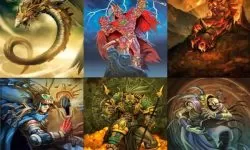
AZTEC GODS: List of Names, Meanings and Powers
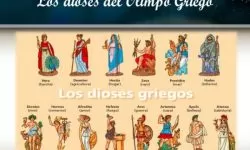
OLIMPUS GODS: ¿ Who Are ? ¿ What Are ? Names and Powers
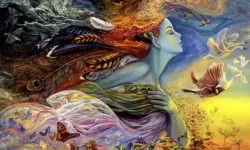
THE GODDESSES OF MYTHOLOGY: Their Names and Meanings
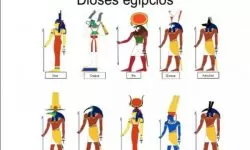
EGYPTIAN GODS: Their Names and Meanings
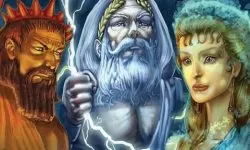
GREEK GODS: Names, Family Tree and Their Powers
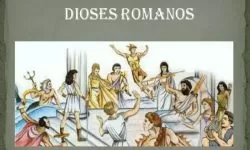
ROMAN GODS: Names, Meanings and Characteristics
Astrology in ALPHAPEDIA
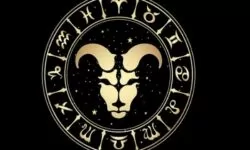
ARIES ZODIAC SIGN: Meaning, Characteristics and Personality
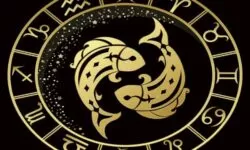
AQUARIUS: Meaning, Characteristics and Personality
Other Topics of Interest in ALPHAPEDIA

FREE DOCTORATE IN PROJECT MANAGEMENT

FREE UKELELE COURSE
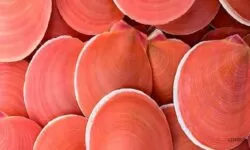
CORAL COLOUR: Types, Psychology and Meaning

FREE MECHANICS COURSE

FREE COURSE ON EVENTS MANAGEMENT AND PROTOCOLS

FREE MASTER DEGREE IN FOOD SCIENCE
Images and Drawings of Norse Gods
